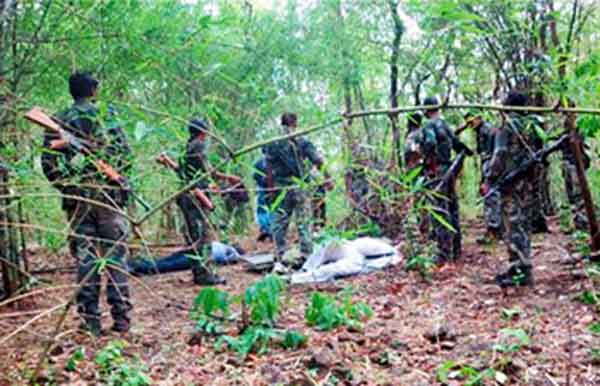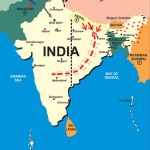“Route-Out aur Route-In Alag Hoga” said the Ustad at the Indian Military Academy. This phrase sounded too basic and too simplistic at that time to the young boys sitting there, imbibing their first lessons in military training. But with every passing year in service, and with every field experience, every veteran of the Indian Army has known how true this phrase is. Also how many times, so many good men have lost their lives or limbs by not following this dictum.
An insurgent when he takes up arms is clear in his mind that he would be killed someday but his motivation stems from his belief in his presumed cause or his need for power of holding a weapon.
The latest ambush by the Maoists has come after the ill famous Latehar episode and the monster has again struck with lethality and accuracy. The silence since the Latehar incident in Jan 2013, has been broken with the ambush on 25 May 2013 in Bastar that left 28 dead including Mahendra Karma, the architect of the anti-Naxal Salwa Judum and 32 injured including former Union minister and Madhya Pradesh CM, V C Shukla.
The political party convoy that was ambushed around 5:30 pm at Darba Ghati in Sukma in Southern Bastar, as per the newspaper reports, the politicians and the state police probably were returning on the same road which they had taken to reach the venue of the rally. For all our dresses and insignias of Special Forces, commandos, Z category security, Garuds, Greyhounds and other fancy names, the basics if not followed will result in similar incidents. Even if the routes taken were different, the fact that the route taken was well publicised was a security lapse.
Power point has gone down deep into our psyche and has taken us away from the ground realities. There are those, who keep pointing to figures and charts as the signs of steady decline while quoting figures, like incidents have been down from 625 in 2010 to 465 in 2011 and from 370 in 2012. The ferocity of the attack goes unnoticed with time, in the maze of these figures. Presentations are given about decreasing data of violence in naxal affected areas. Or for number of headquarters who keep comparing figures on other parameters, like incidents comparable in corresponding period of last year etc as if this is a business plan where sales targets have to be met, on a quarter on quarter basis. These belie the larger reality that the no incident period is being used by the Naxals for reorganising and regrouping. Any silence is but a strategic withdrawal. The number of incidents may be decreasing, but the lethality, accuracy and quality of targets being hit is increasing.
The whole approach therefore needs a change. In all uniformed organisations today, the headquarters are heavier in number of officers posted to them than in the fighting forces. More officers are required in field units than in headquarters sitting behind computers or projectors, looking at the slides or following mundane instructions of the presenters to change colour red to blue on light background making it suitable to the choices of the visiting dignitaries. Then there are charts, the bar chart, the pie chart and the special one which has shadows. If only, so much of effort goes into knowing your men, the money spent on procuring these multifarious range of visual displays, goes into buying night sights, better weapons, bullet proof jackets, better vehicles, more training facilities and even better compensations for those who loose life or limb. This lopsided approach of living from incident to incident needs a change.
The Naxals are out there with a clear agenda. The government and state police forces must have a clear agenda too. An insurgent when he takes up arms is clear in his mind that he would be killed someday but his motivation stems from his belief in his presumed cause or his need for power of holding a weapon. For the security forces, this has to come from elitism in training and building procedures, bonhomie and comradeship topped by leadership of the Commander Cadre. What is the Commander Cadre? The lowest commander who needs to be most effective, and will bear the brunt in all its ferocity, is the section commander or the troop leader or the convoy commander or the team leader. It is his command that needs to be the most effective. The age old adage, “the chain is as strong as its weakest link” is so very true.
For every insurgent or terrorist who has been released, the government must realise how adversely it affects the morale of troops fighting on ground, who pay with their blood to apprehend these people.
Our lowest fighting commander has to be the strongest. But in today’s environment, this command is virtually non-existent and non-functional. His command i.e. his team or his section must live, eat, stay, proceed on leave, return from leave and most importantly train together. The adhocism that prevails today at this level, to say the least, is horrendous. Collecting ten men and sending them on a convoy protection or a patrol, does not make a section. And if this section has to fight then they have to be cohesive. Cohesion will come from continuity, continuity in organisation with no frequent posting in and out of men at the level of the lowest team, continuity in training, where in the men will know what the section commander wants by the mere look of his face or a hand signal and from continuity in procedures as the team evolves into a fighting entity.
The state congress chief and his son who were initially thought to have been abducted were also found to be murdered in cold blood. Initially newspaper reports had indicated that the central government was wary of the hostage drama that was likely to unfold. As a country we have lost out, in our handling of hostage crisis situations, many a times in the recent past. As a nation we have spilt more blood post-release of the captured militants or terrorists as they have reorganised and struck back at us. Our country today needs to have a stated policy of no compromise on the hostage release issue. For every insurgent or terrorist who has been released, the government must realise how adversely it affects the morale of troops fighting on ground, who pay with their blood to apprehend these people. All efforts must always be made to secure the release through all means including conduct of security operations except resorting to meekly surrendering to the abductors demands. The nation must learn to accept loss of these hostages as martyrs, in the service of the nation, should all efforts fail to secure their release.







Good points but the argument about ‘No Compromise” on hostages seems a bit misplaced. Do you mean a ‘No Negotiation” policy or “No Amnesty/Pardon” policy or something else. BTW, no country has the above as its policy; even Israel. I have done sufficient research on this to state this with reasonable assurance. Maybe a bit more of thought into this aspect will make the article better.